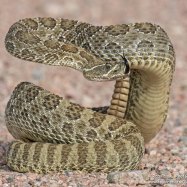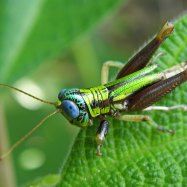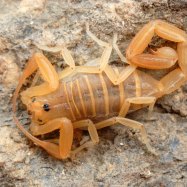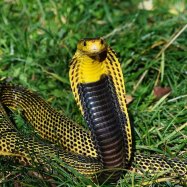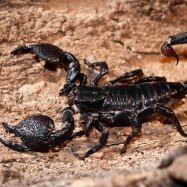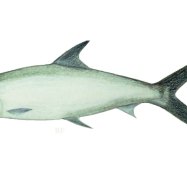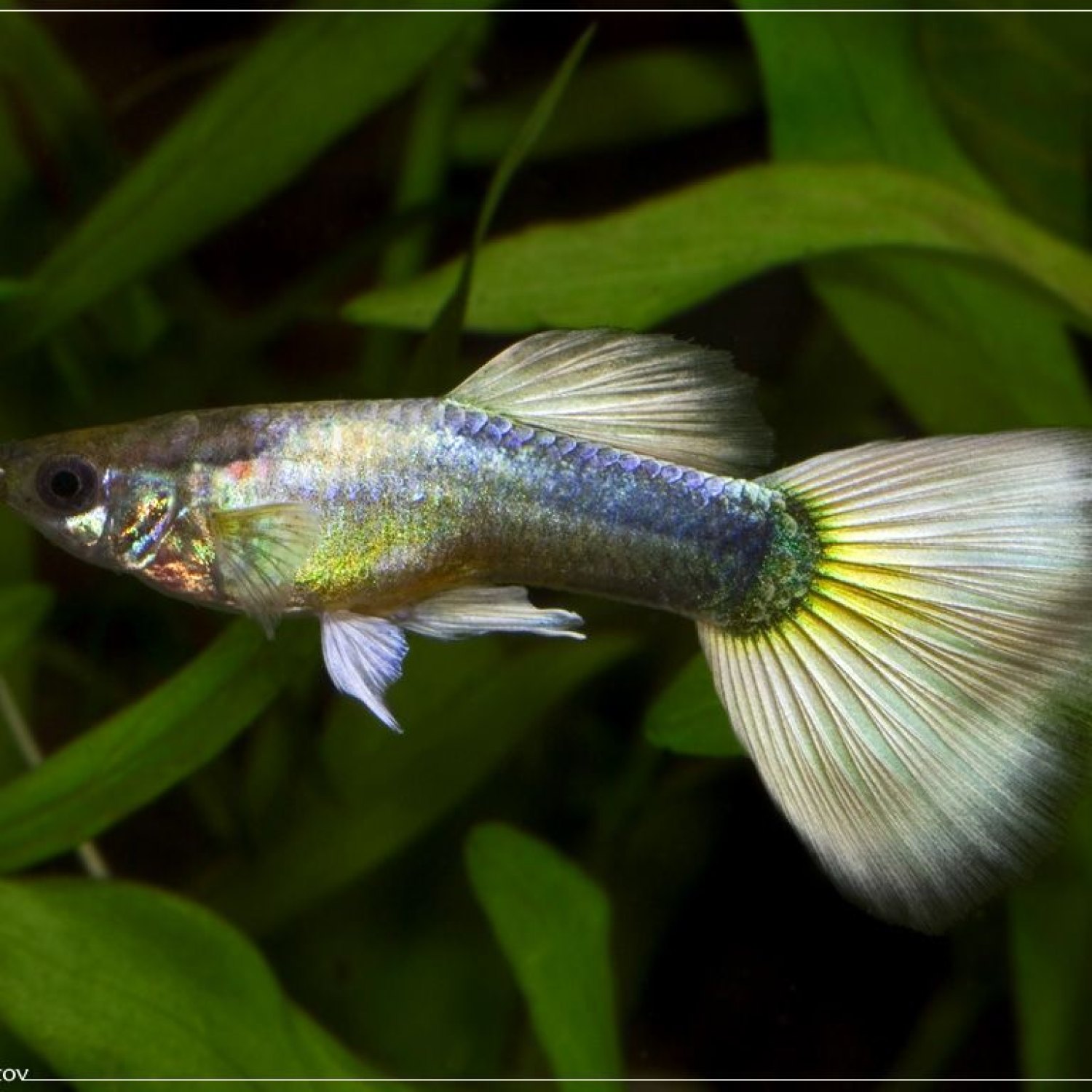
Guppy
2.5 - 6 centimeters
Guppies are popular tropical fish known for their small and slim bodies and distinctive upturned mouths. Ranging from 2.5 to 6 centimeters in length, these colorful and peaceful creatures can be found in freshwater habitats all over the world. The Poeciliidae family is home to over 300 different guppy species, making them a fascinating and diverse addition to any aquarium. #animals #fish #guppies #aquarium
Animal Details Summary:
Common Name: Guppy
Kingdom: Animalia
Habitat: Freshwater
Guppies: The Colorful Beauty of Freshwater
Water is a fascinating element that covers nearly 70% of the Earth's surface. It is home to a diverse range of marine and freshwater species. Among these species are the guppies, a colorful and charming fish found in freshwater habitats around the world. These small, slim-bodied fish with a slightly upturned mouth are known for their vibrant colors and are a popular choice for aquarium enthusiasts Guppy. In this article, we will dive into the world of guppies, exploring their scientific name, origins, appearance, behavior, and characteristics that make them unique.The Scientific Details of Guppies
Before we delve into the mesmerizing world of guppies, let's take a closer look at their scientific name and classification. The scientific name for guppies is Poecilia reticulata. This name comes from the Greek word "poikilos," meaning diverse or spotted, and the Latin word "reticulatus," meaning covered with a net or mesh. This name is fitting for these colorful fish, known for their varied patterns and markings.Guppies fall into the Kingdom Animalia, which includes all animal species. They belong to the Phylum Chordata, which includes all creatures with spinal cords. Guppies are part of the Class Actinopterygii, which includes all ray-finned fish. Their order is Cyprinodontiformes, which comprises over 1,200 species of fish, including guppies Giant Beaver. Guppies are from the family Poeciliidae, which contains several species of live-bearing fish commonly found in freshwater habitats.
Origin and Distribution of Guppies
Guppies are native to South America, with the majority found in the country of Venezuela. They are believed to have originated from the upper reaches of the Amazon basin and its tributaries. The first recorded discovery of guppies was in 1866 by German naturalist Albert Günther, who described them as Lebistes reticulatus. Since then, guppies have been introduced to many countries worldwide, leading to their widespread distribution in tropical and subtropical regions.Today, guppies can be found in various countries, including Brazil, Colombia, Guyana, Trinidad, and Tobago, as well as parts of the United States, Europe, and Asia. These fish thrive in freshwater habitats such as streams, ponds, and slow-moving rivers with plenty of vegetation and hiding spots. In some countries, guppies have been introduced to control mosquito populations, as they are known to feed on mosquito larvae.
Colorful Beauties of Aquaria
Guppies are among the most colorful fish species in the world. Their unique patterns and vibrant colors have made them a popular choice for aquarium enthusiasts. They come in a variety of colors, including red, yellow, blue, orange, and black. These colors are most pronounced in males, while females tend to have more muted colors. The coloring of guppies is a result of artificial selection by breeders, who have created various color morphs by selectively pairing breeding partners with specific colors and patterns.In the wild, guppies have evolved to have these bright colors as a survival mechanism. Male guppies use their colorful appearance to attract females during mating. The brighter and more elaborate their colors, the more likely they are to attract a mate. Additionally, these colors serve as a warning sign to predators that guppies may be toxic or carry diseases.
The Body of a Guppy
Guppies have a unique body shape, making them easily identifiable from other fish species. They are small, typically measuring between 2.5 to 6 centimeters in length. Their slim, streamlined bodies are perfect for swift movements in water, allowing them to quickly escape from predators.One distinctive feature of guppies is their slightly upturned mouth, giving them a perpetual smile. This mouth shape is an adaptation to feed on insects and plant matter at the water's surface. Guppies have a single dorsal fin, two pectoral fins, and a small caudal fin, also known as the tail fin. These fins aid in propulsion and stability as the fish swims through the water.
Life in the Aquarium: Guppy Behavior and Characteristics
Guppies are relatively easy to care for and are a popular choice for beginner aquarists. They have a peaceful temperament and can coexist with other fish species in a community tank. However, it is essential to keep guppies separate from larger, more aggressive predatory fish, as they can become easy targets due to their small size and slow movements.In an aquarium, guppies exhibit a range of interesting behaviors. They are known to be active and constantly swim around the tank, making them delightful to watch. Unlike many fish species, guppies are live-bearers, which means the female carries and gives birth to live offspring rather than laying eggs. This unique aspect of guppy behavior has also made them popular among aquarists, as it allows for the observation and care of fry (baby guppies) from birth.
To keep guppies healthy and thriving, it is essential to provide them with a well-maintained tank with clean water and a balanced diet. Guppies are omnivorous, meaning they eat both plant and animal matter. In the wild, they feed on insects, algae, and small crustaceans. In an aquarium, they can be fed a variety of commercially available fish food, including flakes, pellets, and live or frozen foods such as bloodworms and brine shrimp.
The Importance of Guppies in Scientific Research
Aside from being popular aquarium fish, guppies have also played a significant role in scientific research. Due to their short lifespan, rapid reproduction, and genetic variance, guppies have been used as a model organism in many studies focusing on genetics, ecology, and evolutionary biology. They are especially useful in studying coloration and behavioral genetics, as their color patterns can be easily manipulated through selective breeding and captured through microscopy techniques.Guppies have also been used in studies looking at the effects of pollutants and toxins on aquatic ecosystems. Given their sensitivity to environmental changes, they have been used as bio-indicators, providing valuable insight into the health of aquatic environments and any potential threats to biodiversity.
Threats to Guppy Populations
Guppies may seem like resilient creatures, but they face several threats to their populations. One of the primary threats to guppies is habitat destruction due to human activities such as deforestation and pollution. This destruction of their natural habitats can lead to reduced food sources, reduced breeding grounds, and changes in water quality, all of which can negatively impact guppy populations.Furthermore, guppies may also face competition from other invasive fish species, leading to a decline in their numbers. Global climate change is also a significant threat, as rising temperatures can alter the water conditions, making it unsuitable for guppies to survive.
In Conclusion
Guppies may be small in size, but they are full of personality and beauty. From their vibrant colors and unique body shape to their interesting behaviors and role in scientific research, these fish have captured the hearts of many. However, it is essential to protect and preserve their natural habitats to ensure their survival in the wild. By understanding and appreciating these fascinating creatures, we can work towards creating a sustainable environment for guppies and other freshwater species to thrive. So next time you see a guppy swimming in an aquarium, take a moment to appreciate the incredible world of these colorful beauties of freshwater.

Guppy
Animal Details Guppy - Scientific Name: Poecilia reticulata
- Category: Animals G
- Scientific Name: Poecilia reticulata
- Common Name: Guppy
- Kingdom: Animalia
- Phylum: Chordata
- Class: Actinopterygii
- Order: Cyprinodontiformes
- Family: Poeciliidae
- Habitat: Freshwater
- Feeding Method: Omnivorous
- Geographical Distribution: South America
- Country of Origin: Venezuela
- Location: Tropical and subtropical regions worldwide
- Animal Coloration: Variety of colors including red, yellow, blue, orange, and black
- Body Shape: Small, slim-bodied fish with a slightly upturned mouth
- Length: 2.5 - 6 centimeters
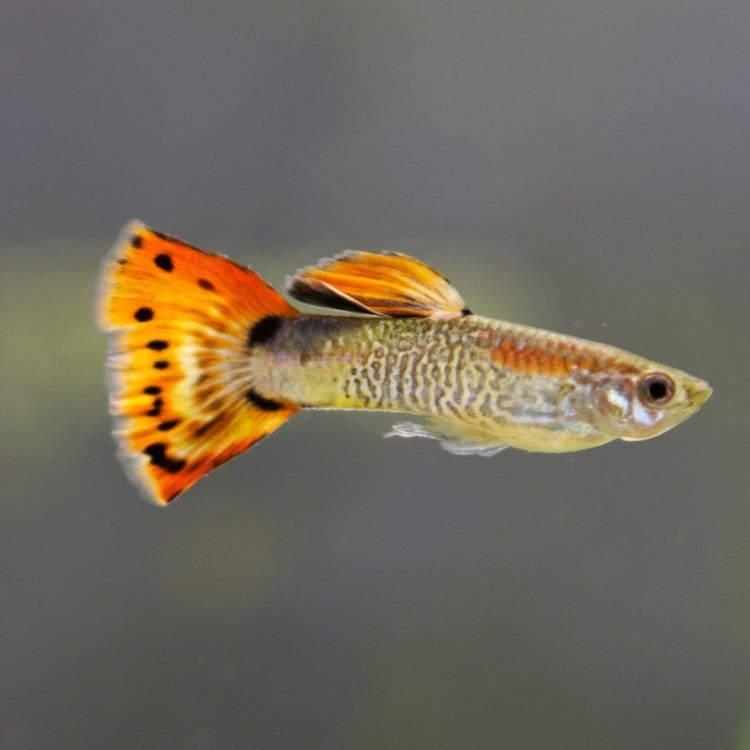
Guppy
- Adult Size: 2.5 - 6 centimeters
- Average Lifespan: 1 - 3 years
- Reproduction: Sexual
- Reproductive Behavior: Live-bearing
- Sound or Call: Does not produce sounds
- Migration Pattern: Non-migratory
- Social Groups: They tend to form schools
- Behavior: Active and peaceful
- Threats: Predation, habitat destruction, pollution
- Conservation Status: Least Concern
- Impact on Ecosystem: Pest of native fish populations in some areas
- Human Use: Aquarium fish, mosquito control
- Distinctive Features: Males are smaller and more colorful than females
- Interesting Facts: Guppies are known for their ability to reproduce rapidly and adapt to various environmental conditions
- Predator: Predatory fish, birds, larger invertebrates
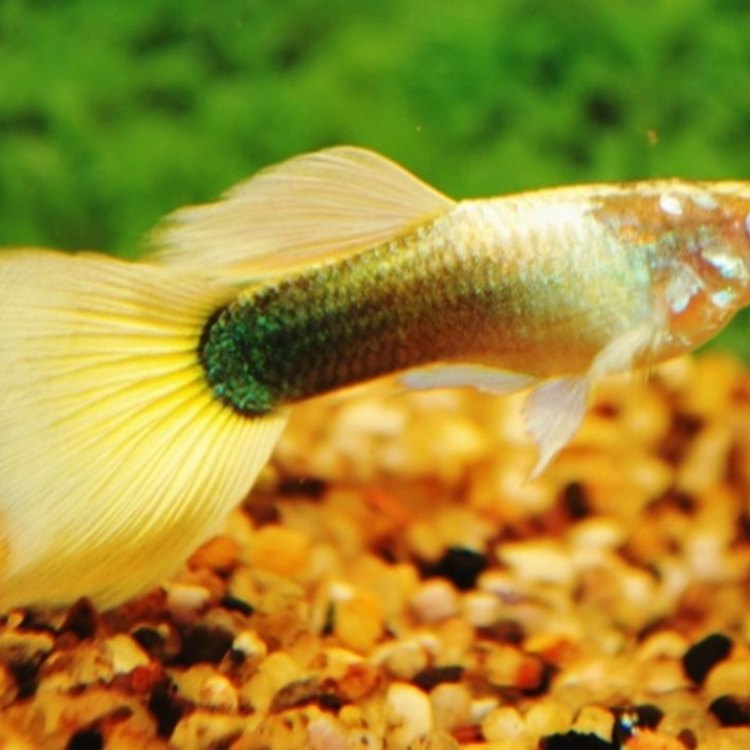
Poecilia reticulata
The Fascinating World of Guppies: Adaptable and Colorful Aquarium Fish
In the vast ocean filled with thousands of species of fish, there's a small but charismatic fish that has caught the attention of aquarists and researchers alike - the guppy.Known for their vibrant colors and active behavior, guppies (Poecilia reticulata) are a popular choice for home aquariums. They are also commonly used in mosquito control efforts as they are known to consume large amounts of mosquito larvae. But beyond their role in human use, guppies have several unique features and behaviors that make them a fascinating species to study PeaceOfAnimals.Com.
Let's dive into the world of guppies and discover what sets them apart from other fish species.
The Basics: Size, Lifespan, and Reproduction
Guppies are small in size, measuring only 2.5 to 6 centimeters when fully grown. They have a short lifespan of only 1 to 3 years, which is quite shorter compared to other fish species.One of the most distinctive features of guppies is their method of reproduction. They are sexual and use internal fertilization to reproduce. The male guppies use a specialized anal fin to deposit sperm into the females. The females then hold the fertilized eggs inside their bodies until they give birth, a process known as live-bearing.
Born Ready: Rapid Adaptation and Unique Social Behavior
Guppies are well-known for their ability to reproduce rapidly, with females able to give birth to as many as 200 fry (baby fish) at once Golden Oriole. This makes them a highly adaptable species that can quickly repopulate injured or depleted populations.In addition to their rapid reproduction, guppies also have a unique social behavior. They tend to form schools, which are essentially groups of fish that swim together in a coordinated manner. These schools provide guppies with protection from predators and are essential for their survival.
Creature of the Water: Active and Peaceful Behavior
Guppies are active and peaceful fish, making them a perfect choice for beginner aquarists. They are constantly swimming and exploring their environment, which adds a lively touch to any aquarium. Their peaceful nature also makes them great tankmates for other peaceful fish species.But don't let their peaceful behavior fool you, guppies are opportunistic feeders and will eat anything that fits into their mouths. In their natural habitat, they primarily feed on small invertebrates and plant matter.
What Threats do Guppies Face?
Despite their adaptable nature, guppies face numerous threats in the wild. They are preyed upon by larger fish, birds, and larger invertebrates. In addition, the destruction of their habitat and pollution are significant threats to their survival.The introduction of guppies to non-native environments has also caused concern for native fish populations. Guppies are considered a pest in some areas, as they outcompete native fish for resources and disrupt the balance of the ecosystem.
Guppies and Humans: A Beneficial Relationship
While they may face threats in the wild, guppies have a beneficial relationship with humans. They have been a popular choice for home aquariums for centuries due to their colorful appearance and peaceful nature. In addition, their reputation as mosquito control agents has made them a favored species in areas where mosquito-borne diseases are prevalent.But it's not just their role in human use that makes guppies unique. They also have distinctive features that make them stand out from other fish species.
Distinctive Features: Colorful Males and Interesting Adaptations
Males and females of the guppy species have distinct physical differences. Male guppies are smaller and more colorful than females, with vivid patterns and bright colors ranging from orange to blue to green. These colors serve as a way for males to attract females for mating.In contrast, females are generally larger and less colorful, with a more subdued coloration to blend in with their environment for protection.
Guppies also have interesting adaptations that make them well-suited for different environmental conditions. For instance, they can easily regulate their body temperature in cold water by changing the color of their scales, trapping heat to keep them warm. In addition, they can also adapt to a variety of water conditions, from fresh to brackish water, making them a hardy and versatile species.
The Conservation Status of Guppies
The good news is, guppies are not facing any significant threats in terms of population decline. They are currently listed as "Least Concern" on the International Union for Conservation of Nature (IUCN) Red List, indicating that their population is stable.However, that doesn't mean we should ignore the potential threats they face. As responsible pet owners and environmentalists, it is our responsibility to ensure that guppies and other species are not affected by human activities.
The Future of Guppies: A Promising Species
Guppies may be small, but they have made a big impact not only in the world of fishkeeping but also in their role in mosquito control and adaptation to different environments. Their ability to reproduce rapidly and adapt to various environmental conditions makes them a promising species for future research and study.As humans continue to research and explore the vast ocean, we are constantly learning more about the fascinating world of guppies. With continued efforts in conservation and responsible ownership, we can ensure that guppies and other fish species will thrive for generations to come.
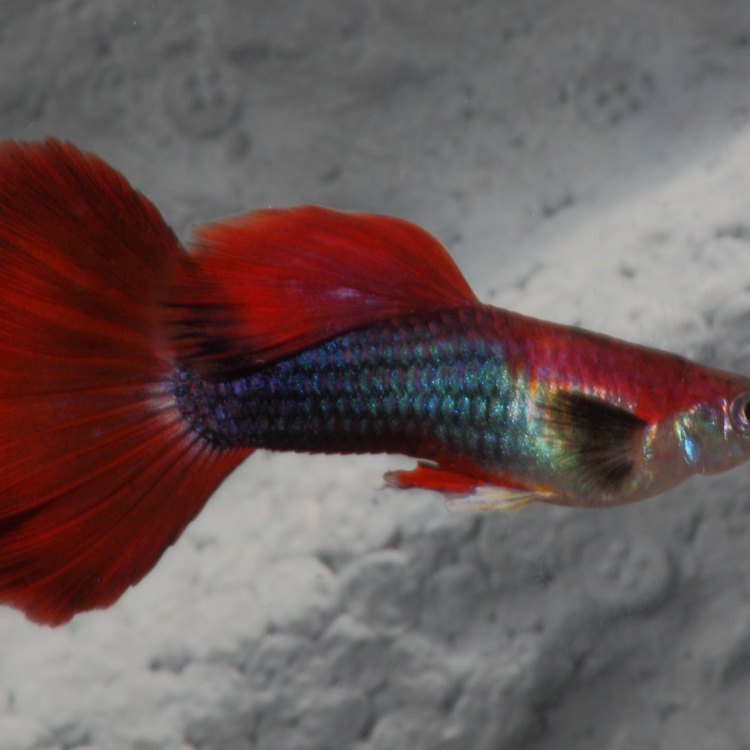
Guppies: The Colorful Beauty of Freshwater
Disclaimer: The content provided is for informational purposes only. We cannot guarantee the accuracy of the information on this page 100%. All information provided here may change without prior notice.


